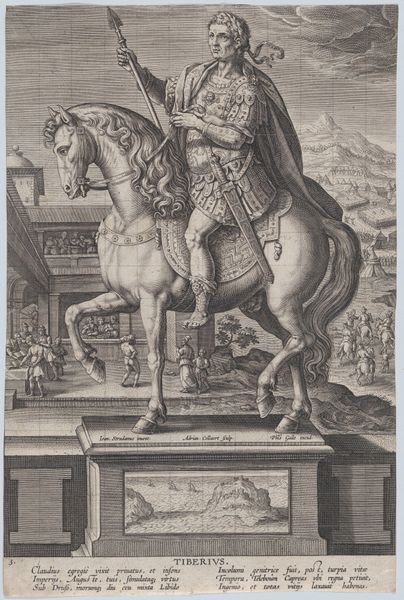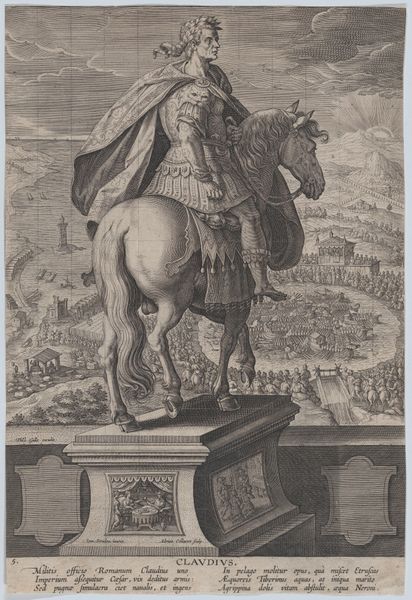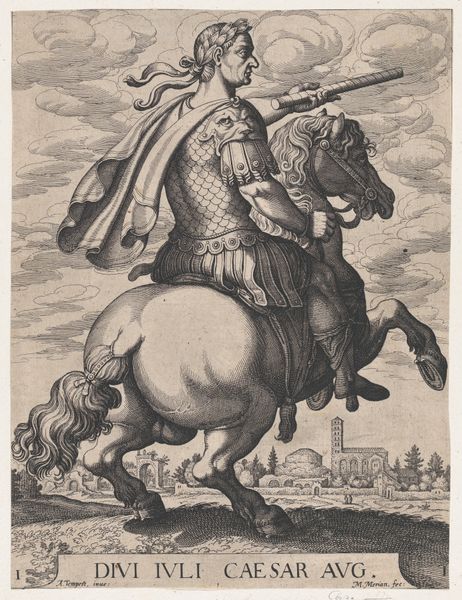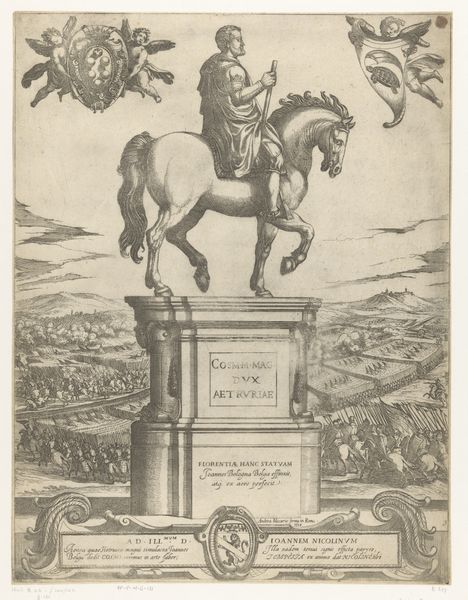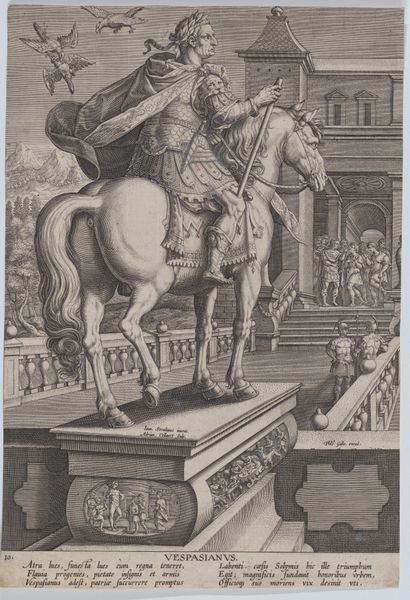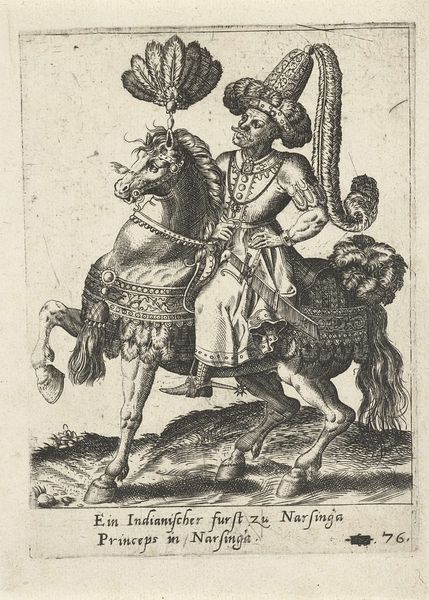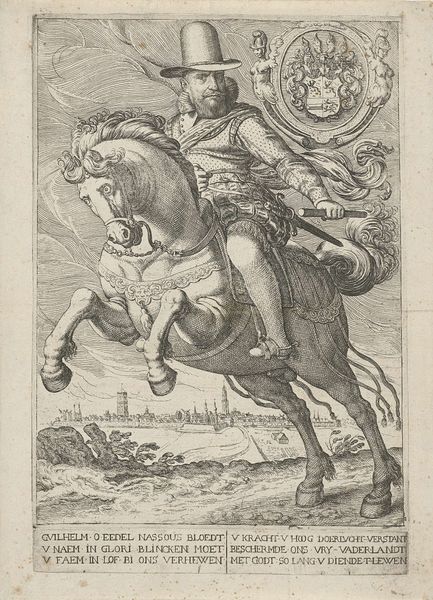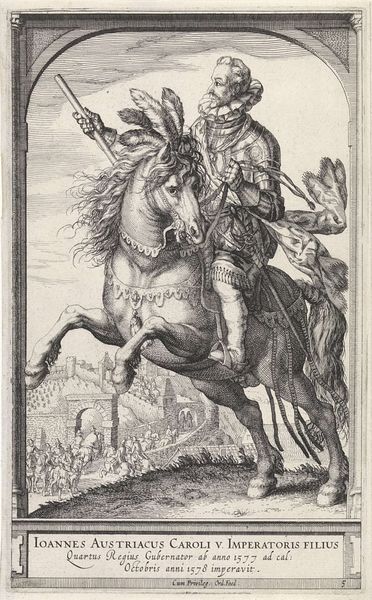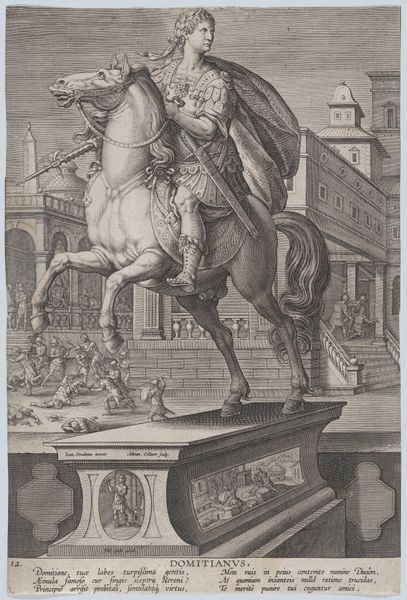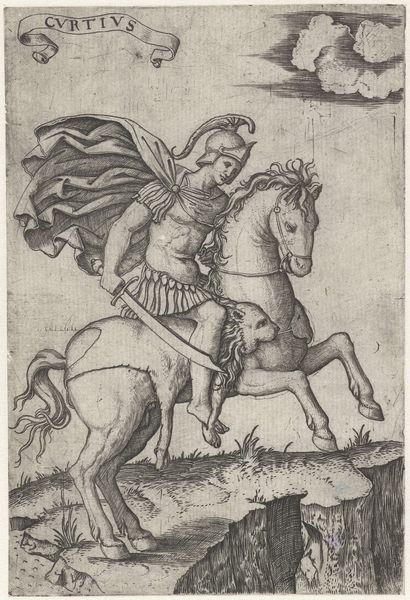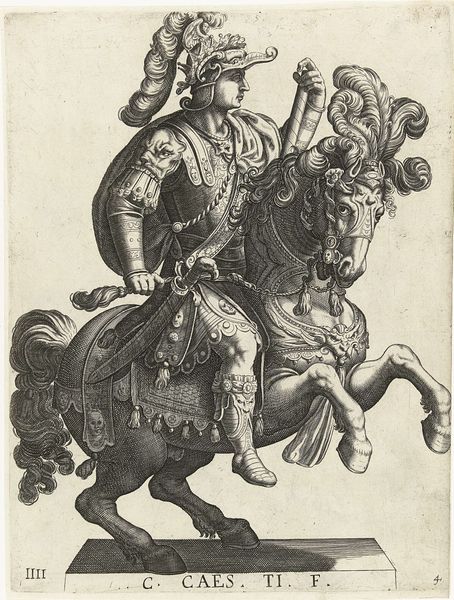
Plate 4: equestrian statue of Caligula, seen three-quarters to the left, wearing a winged helmet and holding double-headed arrows, a military scene in the background, from 'Roman Emperors on Horseback' 1582 - 1594
0:00
0:00
drawing, print, metal, engraving
#
portrait
#
drawing
# print
#
metal
#
figuration
#
romanesque
#
horse
#
men
#
history-painting
#
engraving
Dimensions: Sheet (Trimmed): 12 5/8 × 8 9/16 in. (32.1 × 21.7 cm)
Copyright: Public Domain
Adriaen Collaert's engraving presents an equestrian statue of Caligula, made during a time when the echoes of Rome's grandeur still resonated. Here we see Caligula, helmeted with wings reminiscent of Mercury, holding double-headed arrows, symbols laden with intent. Consider how the winged helmet, typically associated with swiftness and communication, is here appropriated to amplify Caligula’s image. The double-headed arrows perhaps allude to a desire for power, striking in multiple directions. We see such appropriations across history – symbols like the eagle or the fasces, once emblems of republican virtue, twisted to bolster imperial might. The psychological weight of these symbols cannot be understated. They stir deep within us a sense of awe, fear, and the intoxicating allure of power, emotions that transcend the ages. This image, like the echoes of history, is non-linear, cyclical, and ever resurfacing.
Comments
No comments
Be the first to comment and join the conversation on the ultimate creative platform.
